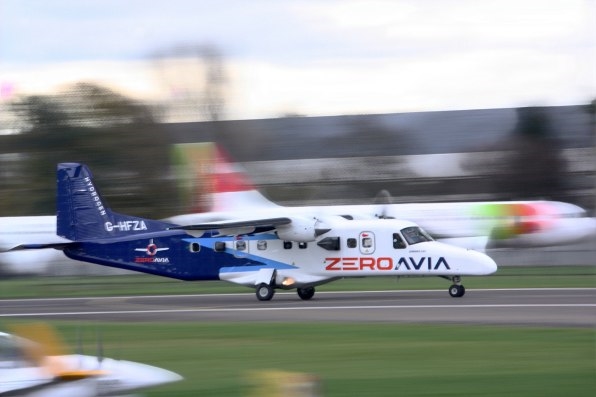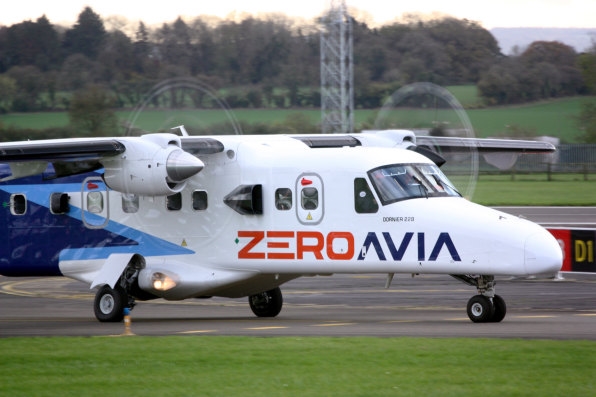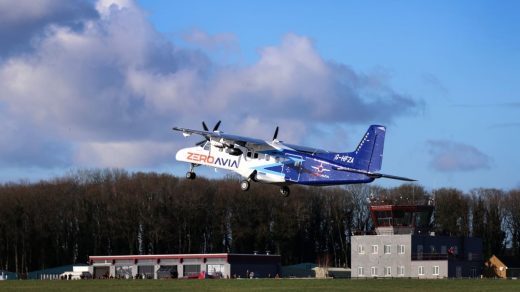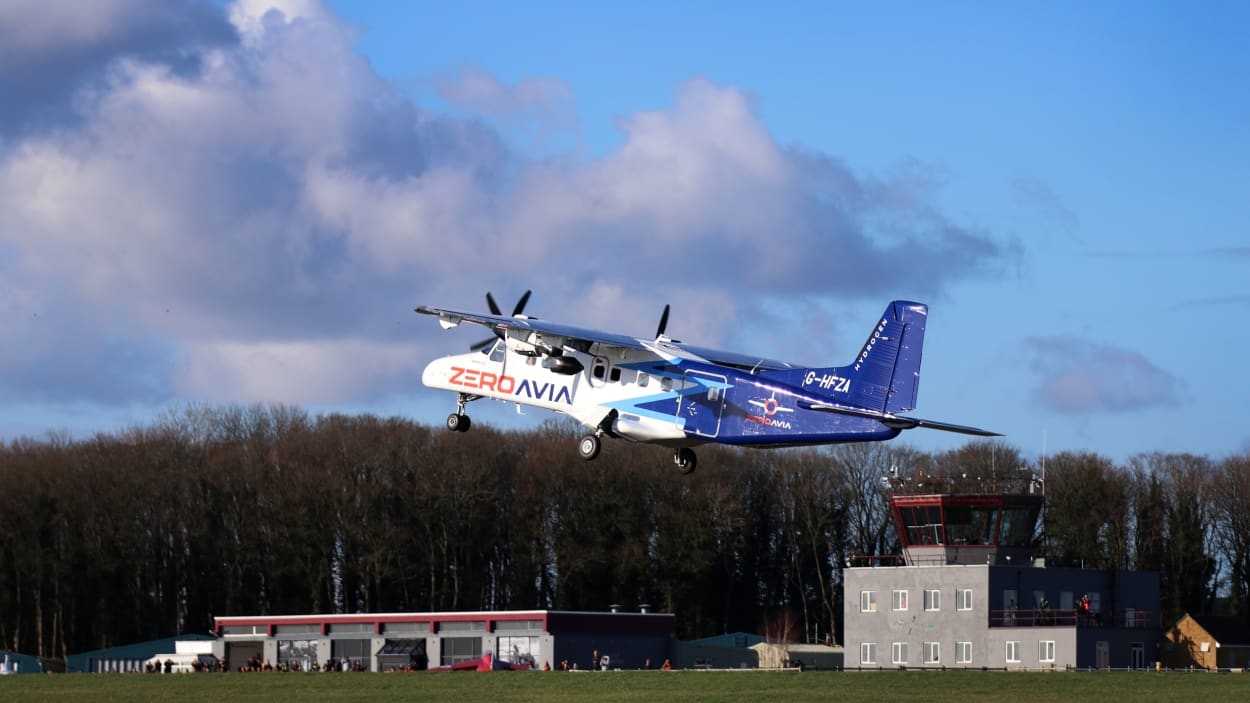This 19-seater plane is the first ever to run on a hydrogen-electric engine
When a 19-seat airplane took off at a small U.K. airport on January 19—and flew briefly, for 10 minutes—it was the largest plane ever to run on a hydrogen-electric engine. The zero-emissions fuel was made in an electrolyzer at the airport, in a test of a system that could eventually expand to a network of airports.
“We think aviation is the next frontier of sustainability,” says Val Miftakhov, cofounder and CEO of ZeroAvia, the company that designed the powertrain used in the test. “It’s one of the hardest-to-abate industries. We really don’t have any good solutions, today, commercially available for the sustainability challenge.”
Airlines are also investing in biofuels and synthetic fuels, including jet fuel made from captured CO2 that can be used in current planes. But although the fuels can be carbon neutral, they produce other emissions, including nitrogen oxides, soot, and water vapor, that are also major contributors to climate change. “As long as you have combustion engines up there in the upper atmosphere, you are going to have those effects,” Miftakhov says. (Airlines are also working on ways to reduce these emissions, but haven’t yet solved the challenge.)
Other companies are working on electric planes that run on batteries, but the weight and size of the batteries means that only small planes and short flights are feasible. Only hydrogen fuel, Miftakhov argues, can make electric planes an option for more passengers and longer distances—the type of flights that are most common and responsible for the most emissions now.

That’s not to say that a shift to hydrogen is easy. “It has significant technological challenges,” he says. “It’s brand new. No one’s flown these things before commercially, nobody has certified these things before for propulsion. But fundamentally, from the physics of first principles, this is the best option.”
ZeroAvia designed a hydrogen-electric powertrain that can replace traditional engines. During flight, a fuel cell converts hydrogen stored in tanks so that it can power electric motors. The company previously tested the technology in a small, six-person plane. The new test is the first of a version designed for larger, 19-passenger planes. One more iteration of the design will follow, tweaking how the components are arranged in the powertrain. The company expects to complete the final design in 2023. Certification tests will take another 12 to 18 months.

Several airlines have poured funding into the company, including United, Alaska, and American Airlines, which invested an unspecified amount in August and has an option to order as many as 100 of ZeroAvia’s engines. In total, airlines have more than 1,500 of the engines on preorder. They can be used both on regional passenger routes and for delivering packages (Amazon is another investor). The company has raised $140 million to date.
As it gets ready to launch, ZeroAvia is also working with companies that make technology to produce green hydrogen (hydrogen produced with clean energy, so it has no footprint) to help set up infrastructure at airports, so the fuel can be made as close to the planes as possible. “I think the technology to produce green hydrogen at the right cost is already there,” Miftakhov says. “Now, the readiness of the traditional infrastructure players to actually build out the infrastructure and put that hydrogen at the airport is not there. So, that’s why we’re taking leadership on orchestrating that infrastructure.” The company is also working with financing partners to fund the new system, he says.
The company is simultaneously working on a larger version of its powertrain that could eventually be used in 40- to 90-seat planes. That technology requires a different type of fuel cell and motor. It will also use compressed gas hydrogen, a version of the gas more like what’s used in rocket propellant than what’s used now in hydrogen-fueled cars like the Toyota Mirai.
The team is also beginning to work with an aircraft manufacturer on new planes custom-designed for the new power system, though that process will take longer because the planes will also have to get regulatory approval. “The only way for us to get to market in [2025] is to go after the existing types of aircraft, so we don’t have to certify new aircraft,” Miftakhov says.
Hydrogen weighs much less than jet fuel, but requires more volume, so planes that can eventually take cross-ocean flights will need to be designed with more space for fuel tanks. The company’s first planes use tanks mounted on the wings to help save space; when the company shifts to liquid hydrogen, which is more energy dense, it will limit the range somewhat, but Zeroavia engineers still expect to be able to fly on almost all existing routes, with the required reserves of fuel on board.
Though many hurdles remain, Miftakhov believes it’s technically possible for the aviation industry to get to “true zero” emissions—as opposed to “net zero” emissions that require carbon offsets—by 2050.
“The technology will get there,” he says. “Now, whether we will, and to what extent—what percentage of the market or the vehicles—is another question. The vehicle-replacement cycles in commercial aviation are 30 years or more. People are buying aircraft today that will still fly in 2050 and maybe beyond. So, in order to have that replacement occur sooner . . . society somehow would need to push that harder. And whether it’s through incentives for zero emissions, or disincentives for fossil fuel, I think it can be done.”
(17)



